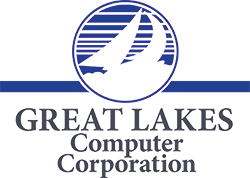 This is the first in a monthly series of guest blogs from Organizing 4 U, a fellow Northeast Ohio Company and CMBA Partner. They are professional organizers for business and residential, who will share with our readers some insights into organizing your business – and your life! Today, they discuss organizing your computer files. This is, naturally, a subject close to our heart, as many times we are called in to restore PC’s, only to find the data and backups haphazardly scattered. Having a Data Protection and Backup plan on your PC is important, but if you can’t find the files you need in your backup, then it becomes another pain point. These are some great tips to organizing your PC’s:
This is the first in a monthly series of guest blogs from Organizing 4 U, a fellow Northeast Ohio Company and CMBA Partner. They are professional organizers for business and residential, who will share with our readers some insights into organizing your business – and your life! Today, they discuss organizing your computer files. This is, naturally, a subject close to our heart, as many times we are called in to restore PC’s, only to find the data and backups haphazardly scattered. Having a Data Protection and Backup plan on your PC is important, but if you can’t find the files you need in your backup, then it becomes another pain point. These are some great tips to organizing your PC’s:
Controlling Computer Clutter
From the Organizing 4 U blog
One area for which we have had a number of questions is organizing information on a computer. Like a file drawer, the information contained in your computer should be easily accessible when you need it. Here are a few tips.
First, all of the documents and other information in your computer should be filed into “folders” in the same manner that you would file similar information in a filing cabinet or drawer. Ideally, the categories and sub- categories should be the same in both locales. For example, ‘paid bills’ if you pay bills on line and want to keep receipts, or folders for various special interests or hobbies. If they are mirrored like this, then you will spend less time searching for information in each place. You will also not need to print out everything you save digitally, as you know it will be saved in one of only two locales.
Management of your e-mails can also be organized in a similar manner. The folders could be within the e-mail program you use, or saved as a document in another program’s folder. As always, we advise that the naming of the folders you use makes sense to you. Think about how you will look for something the next time you need it…that will be the name of the folder.
Do you search the internet for information? Those web sites that you wish to return to, or use at a later time can be also be organized with the bookmarks of your browser, or by saving them and utilizing the folders you have established. We have found that a program like Evernote is an excellent tool for saving all of the above information, and can be accessible from your computer, tablet or smart phone.
Organization of digital photos has also elicited many questions. Again, we suggest that the manner in which you organize these photos be done in a way that makes sense to you. This could be chronologically, by events or by individual. You could create your own system or use a program like Picasa or Flickr. Tag photos or name the folders when they are initially saved and delete photos that you do not wish to keep. Which photos you wish to print is a matter of personal choice. Are they going to be framed, used for scrap-booking, or stored in a box….never to be seen again? There are many alternatives now available to create books, slide shows or other products.
Finally, if you go to the trouble of saving information, then you need to protect it from loss. This can be done with copying to CDs, a USB, an external back-up or cloud technology. (View Great Lakes Computer’s Data Backup & Recovery Services)
Just like the physical files that you have, the computer files should be reviewed periodically with the goal of deleting information that you no longer find useful. If searching for something that you saved on your computer will take longer than actually finding the information from another source, then you should question why your are saving it. There is a wealth of information available to us, and just like physical hoarding, there is also digital hoarding. For more information on this subject, check out a Wall Street Journal article Drowning in Email.

